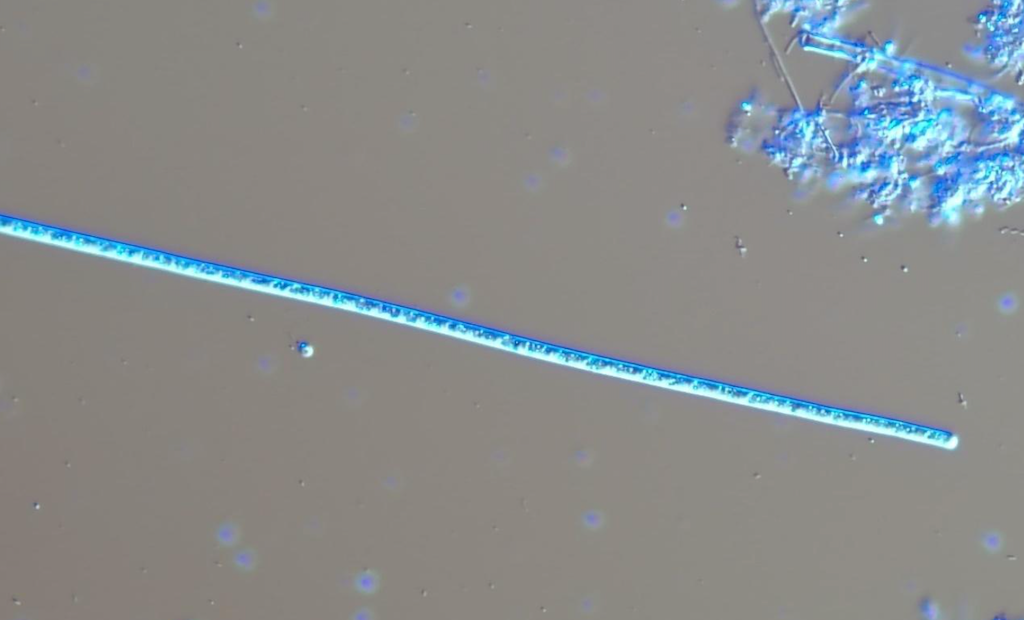Interested in Laboratory?
Get Laboratory articles, news and videos right in your inbox! Sign up now.
Laboratory + Get AlertsEickelboom morphotype Beggiatoa is readily recognizable due to its large diameter (2-4 µm) and its slow-gliding motility. Sometimes septa (cross-walls) may be seen as a rectangular cell shape, however, usually intracellular sulfur granules are seen within this filament type. Beggiatoa are recognized to utilize sulfide as substrate. It is theorized that closely related genera of the Gammaproteobacteria class may share similar morphology and function as mixotrophs (also able to utilize organic acids as substrate).
Beggiatoa morphotypes are most commonly observed in fixed-film systems such as trickling filters and rotating biological contactors. When Beggiatoa proliferate, a white mat-like scum is commonly observed. It is also suspected that Beggiatoa may be incidental filaments in lagoon systems that likely enter through fixed growth in areas such as the collection system. In nature, Beggiatoa may grow in freshwater and marine water when there is sulfide present, often accompanied by sewage and septic odors.
Long-term prevention of Beggiatoa growth involves limiting sulfide and low molecular weight organic acid concentrations. Most commonly, Beggiatoa are also found in areas with a high F/M ratio, such as the first stage of an RBC system. Step feeding or running fixed-film systems in series, rather than parallel, is sometimes successful in reducing Beggiatoa growth. Recycling of effluent to the head of these systems has also been successful in some instances for diluting available substrate. Chlorination is a possible short term band-aid, however, if the root cause of the growth conditions are not changed, Beggiatoa filament growth often reoccurs rapidly.
The MiDAS field guide recognizes seven species within the Beggiatoa genus. Due to difficulty growing these filaments in pure culture, there is little known about other functions of these filaments (like whether they’re phosphorus accumulating organisms, glycogen-accumulating organisms, what the denitrifying capabilities are). It is rare to see Beggiatoa filaments in systems that are not lagoons or contain fixed-film media. Under the microscope, Beggiatoa morphotypes are easy to identify due to their large size, motility and (most commonly) their visible intra-cellular sulfur granules.
About the author: Ryan Hennessy is the principal scientist at Ryan Hennessy Wastewater Microbiology. He was trained and mentored by Dr. Michael Richard for over 10 years in wastewater microbiology, and serves as a microbiology services consultant. Hennessy is a licensed wastewater treatment and municipal waterworks operator in the state of Wisconsin and fills in as needed for operations at several facilities. He can be reached at ryan@rhwastewatermicrobiology.com. Hennessy's new book "Wastewater Microbiology: Filamentous Bacteria Morphotype Identification Techniques, and Process Control Troubleshooting Strategies" is now available on Amazon.






